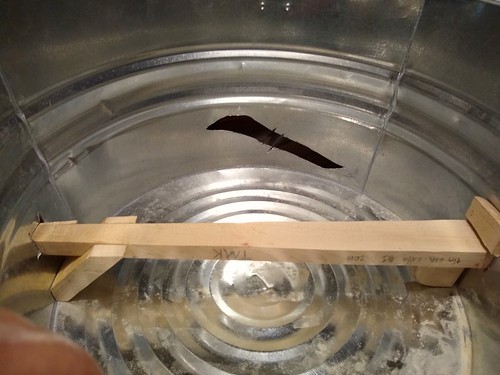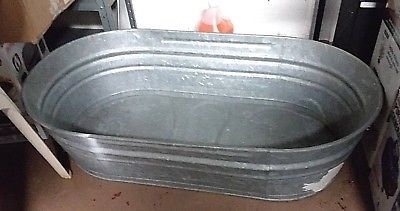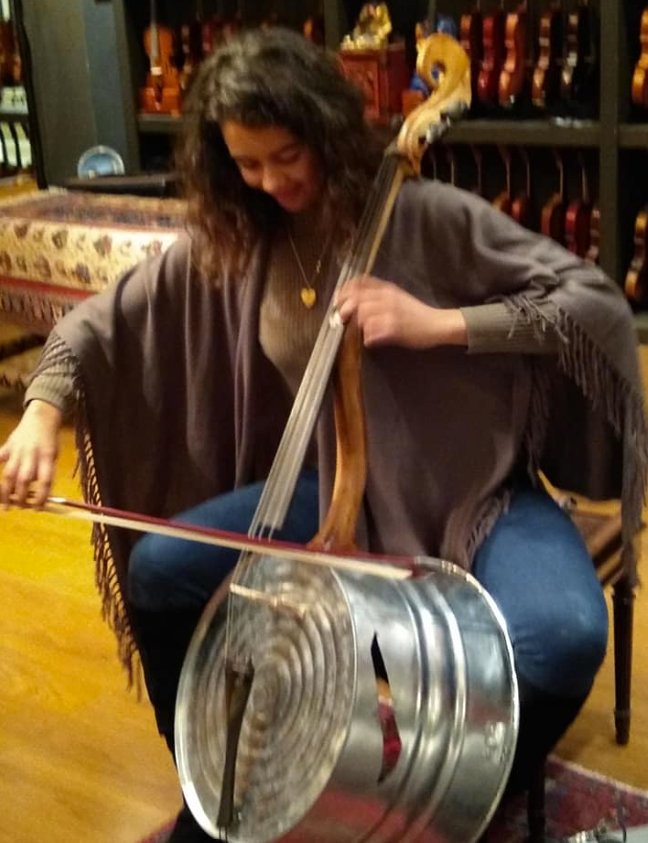Welcome to our forum. A Message To Our New and Prospective Members . Check out our Forum Rules. Lets keep this forum an enjoyable place to visit.
Currently working on errors from the latest (SimplePress) forum update. Many issues have been resoled and others are being worked on. Thank you for your patience.
 Topic RSS
Topic RSS



 (1 votes)
(1 votes) 


I spent the last half of the year designing and making a cello with a steel washtub for its body. I carved the neck and scroll from hard maple; the fingerboard (boxwood) was taken from an old broken cello, as was the soundpost; the strings and components such as pegs, tailpiece, bridge are standard cello components mostly bought from my local violin shop or online.
I kept pretty extensive notes and pictures at my blog -- http://readin.com/blog/?projec.....o&o=a will take you to the first page, and there are links at the bottom of each page for "More posts". Check it out! I'm happy to answer any questions about the washtub cello.
Honorary advisor
Regulars
 Offline
Offline


Regulars
 Offline
Offline

Hello @@The Modesto Kid. I would appreciate a photo of the back side of your cello. I assume there is some sort of “dowel stick” (to use a banjo term) from the neck heel to the end peg to absorb the load imposed by string tension. In your blog, you reference the use of a sound post. What takes the load from the bass side of bridge? If the round wash pail shape was not used to take load (if a dowel stick was used), could an oval pail be substituted for more ergonomic use?
Success is the progressive realisation of a worthy ideal. —Earl Nightingale.



Hi Irv, yes I use a dowel run through the body of the wash tub. Here is a picture of the inside of the tub (there is a plywood back which is not attached here) -- 

The soundpost runs from the bass foot of the bridge to the dowel surface, it does not go all the way to the back of the cello.
I think an oval tub would work fine.
Regulars
 Offline
Offline




Regulars
 Offline
Offline

The possibilities here are endless. I just saw a 42 inch oval with relatively shallow sides (say, a 3/4 double bass) and a smaller oval made out of copper (a real looker but a little heavy at eight pounds).
Makes me want to bow on a steel hand saw as an accompaniment.
Success is the progressive realisation of a worthy ideal. —Earl Nightingale.
Regulars
 Offline
Offline

 Picture this (42” x 24” oval) with two front mounted guitar type metal resonators as a string bass. Every blue grass band in the country would want one. And with the use of a dowel, it would be possible to disconnect the neck for travel.
Picture this (42” x 24” oval) with two front mounted guitar type metal resonators as a string bass. Every blue grass band in the country would want one. And with the use of a dowel, it would be possible to disconnect the neck for travel.
Success is the progressive realisation of a worthy ideal. —Earl Nightingale.


 Log In
Log In Register
Register
























